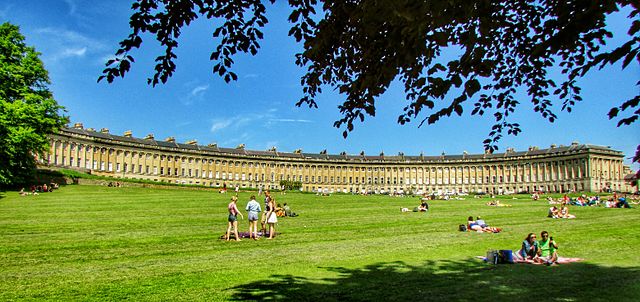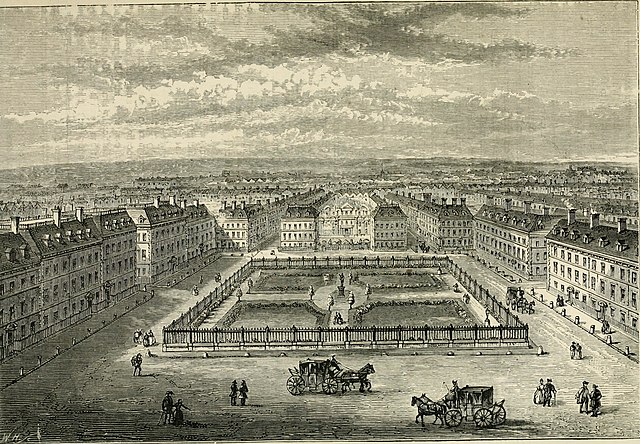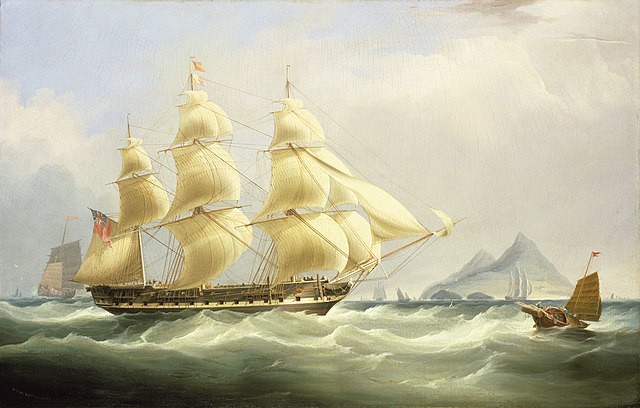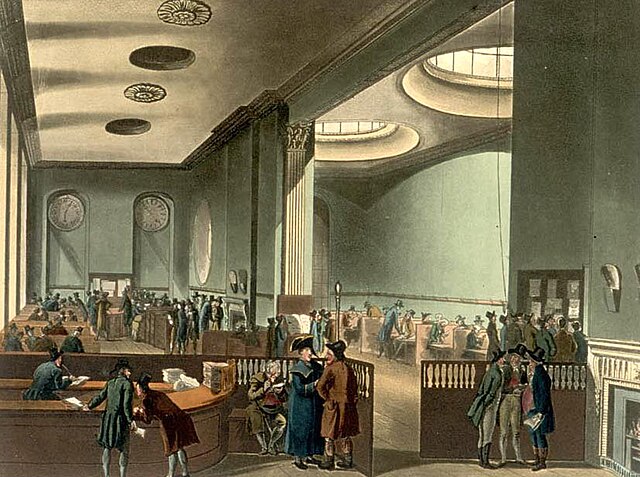The Georgian era was a period in British history from 1714 to c. 1830–1837, named after the Hanoverian kings George I, George II, George III and George IV. The definition of the Georgian era is also often extended to include the relatively short reign of William IV, which ended with his death in 1837. The subperiod that is the Regency era is defined by the regency of George IV as Prince of Wales during the illness of his father George III. The transition to the Victorian era was characterized in religion, social values, and the arts by a shift in tone away from rationalism and toward romanticism and mysticism.
The Georgian architecture of the Royal Crescent in the city of Bath
18th-century London
East Indiaman in the China Seas
The subscription room at Lloyd's of London in the early 19th century
George III was King of Great Britain and Ireland from 25 October 1760 until his death in 1820. The Acts of Union 1800 unified Great Britain and Ireland into the United Kingdom of Great Britain and Ireland, with George as its king. He was concurrently Duke and Prince-elector of Hanover in the Holy Roman Empire before becoming King of Hanover on 12 October 1814. He was a monarch of the House of Hanover, who, unlike his two predecessors, was born in Great Britain, spoke English as his first language, and never visited Hanover.
Coronation portrait, 1762
Prince George (right), his brother Prince Edward, and their tutor, Francis Ayscough (later Dean of Bristol), by Richard Wilson, c. 1749
Pastel portrait of George as Prince of Wales by Jean-Étienne Liotard, 1754
Portrait by Allan Ramsay, 1762








